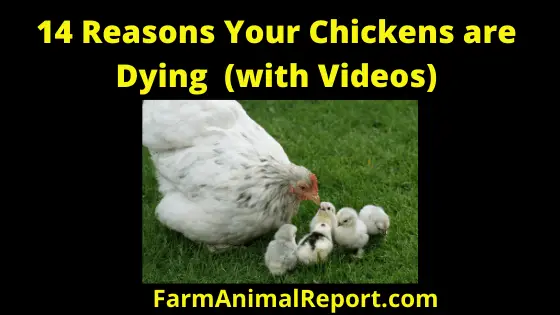my chickens are dying one by one – As a general rule chickens can die suddenly from 1) Fear 2) Trauma 3) Impacted Crop 4) Heart Attack 5) Poisoning 6) Avian Flu 7) Brusal Disease 8) New Castle disease 9) Starvation 10) Predators
5 Reasons Chickens are Dying Suddenly
- Heart Attack
- Accidental Poisoning
- Trauma
- Egg Bound
- Impacted Crop
My Chickens are Dying One by One | Suddenly Die
Why my chickens are dying one by one – When chickens fall sick and or die, the small flock poultry keeper often puts it down to one of three things: if it has feces-stained vent feathers, it’s worms; if the bird was lame, it’s Marek’s disease; if it was sudden death.
You can choose to take your sick bird to a vet. Still, often they are none the wiser – very few vets have specialist poultry experience or know what to look for and to get an accurate diagnosis will involve samples being sent to a lab and post mortem being conducted, all this is usually prohibitively expensive.
See Amazons Educational Resources for Chicken Diseases
3 Global Reasons for Chickens Sudden Death ( sudden chicken death syndrome)
- Avian Influenza
- Brusal Disease
- NewCastle Disease
Without post-mortem, sending samples to a laboratory, and investigation by a poultry specialist, the cause of sudden death in your poultry is probably due to a far greater range of disease organisms than the average poultry keeper with a few birds could imagine.
12 Ways to Make Money by Chicken Farming—Extensive Guidelines for Chicken Farmers
The following common diseases cause a lot of the unexplained deaths you will see in your flock.
Common Chicken Respiratory Diseases – Penn State
Coccidiosis:
This is caused by a parasite that invades the gut and causes symptoms such as blood in the feces and is one of the most common killers of young birds. Determining the cause of death is sometimes a process of elimination.
The other significant parasites – worms, lice, and mites. They can cause severe debilitation, especially in young birds, but do not cause death unless they have an already compromised health status.
Infectious Bronchitis
This is the common respiratory virus, infectious bronchitis can be transmitted around an area on the wind, in the dust, and in feather particles from up to two miles away.
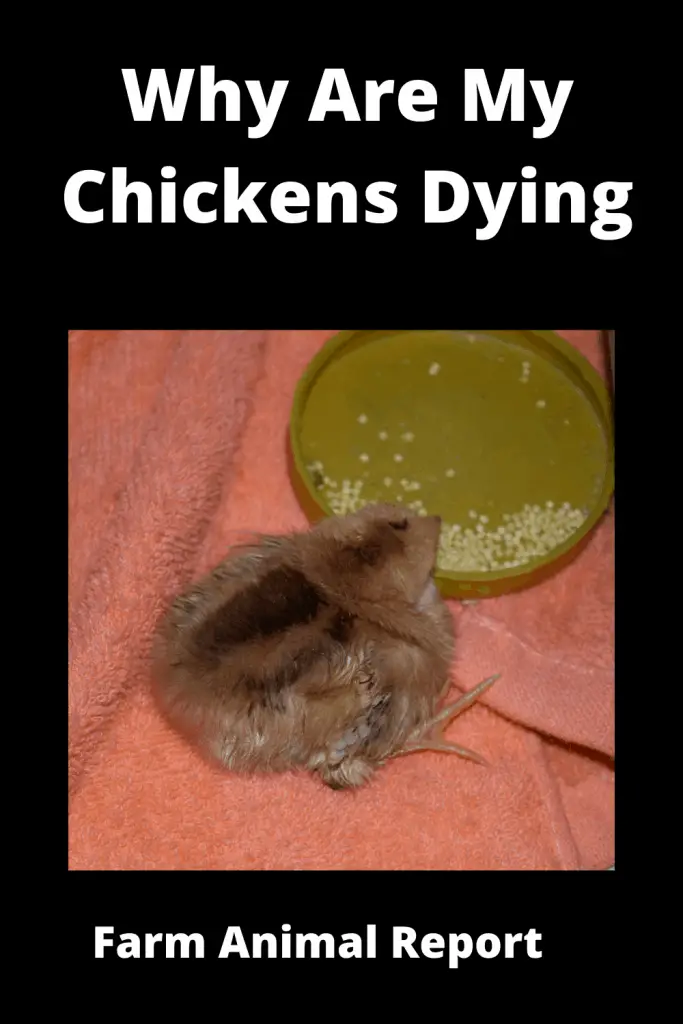
Sometimes the cause of death manifests with respiratory symptoms, but in young chicks, it can cause kidney damage with signs of white, urate-stained vent feathers, and death, or in older laying birds with wrinkled, misshapen eggs and watery whites.
Laryngotracheitis (ILT)
Other viral diseases with respiratory symptoms are infectious laryngotracheitis (ILT), where sneezing, coughing with blood-tinged mucus, and some death occurs. This is more common in the warmer regions of the country.
Mycoplasma:
Mycoplasma is another disease-causing respiratory distress, sneezing, and swelling sinus around the eyes and nose. Most birds in the country will test positive for mycoplasma, having been exposed to it from infected parents. This also can result in death.
Infectious coryza:
This is a bacterial infection involving respiratory signs and is also pretty standard. Both mycoplasma and infectious coryza cause depression and sickness but are not as likely to cause sudden death.
Fowlpox:
This is a virus, spread by insect bites to the comb and face, and is a problem in northern regions where biting insects are essential in the spread of disease, north of about Lake Taupo. Volcano in New Zealand. Birds moving to the areas further south while incubating the disease may unwittingly transport it with them.
There are two forms, dry pox, and wet pox. Dry pox is characterized by flaky lumps on the comb, wattles, and face; the damp form has bumps inside the mouth and throat and is more likely to result in death through suffocation.
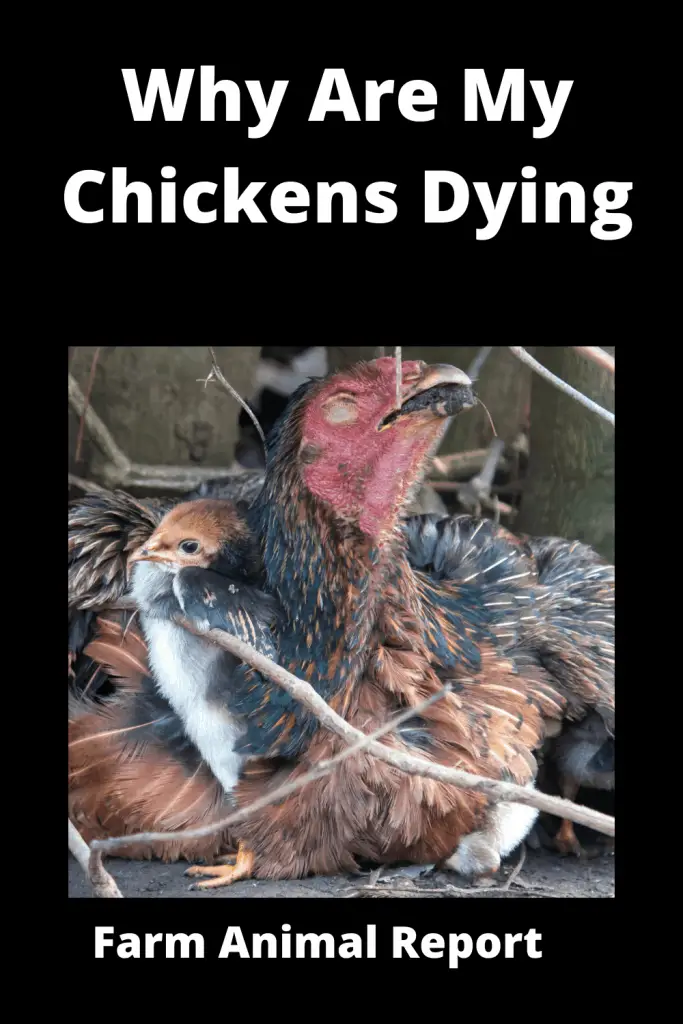
Fowl Cholera:
Also known as Pasteurella, this bacterial disease is far more common than you might expect. Spread by wild birds and rodents, it can appear as sudden deaths around the point of lay, with birds losing condition, resulting in sudden death.
Commercial free-range farmers should vaccinate their birds at the point of lay as fowl cholera is easily spread from backyard flocks by sparrows and rats.
Necrotic Enteritis:
This is caused by clostridial bacteria and is often a secondary invader after another intestinal disease such as coccidiosis.
It can arise from the moldy feed or by mold, which grows in feed troughs when the wet mash is fed, then left to harden and cake the channel. Yellowish diarrhea and birds in poor condition may be the only signs. This is another instance where worms are considered the problem, but a worm treatment will not help.
Erysipelas:
Erysipelas is a disease that is usually associated with turkeys, but it has cropped up in free-range flocks more frequently in recent years.
It is characterized by sudden deaths, usually in young birds; on post mortem, there are hemorrhages around the hearts. It is a very resistant bug that remains in the soil for long periods and enters the birds through small cuts in the mouth and skin.
Marek’s Disease / Pullet Disease / Range Paralysis.
This is the name that puts dread into many poultry keepers, and although often fatal, it doesn’t tend to cause sudden death. The numbers affected in an unvaccinated flock can be as high as 60%. Once infected, mortality is high, reaching nearly 100% over ten weeks. Can spread through 5the flock.
Vaccinated flocks do fare better, with less than 5% affected. Pullets are more likely to be affected than cockerels.
Marek’s is a highly contagious virus caught by chicks in their first weeks of life from older birds. It has an incubation period of 3-4 months, manifesting with visible symptoms when birds are about 15-25 weeks of age, mainly as lameness, but also as blindness, wasting, scouring, bleeding sores that don’t heal, or enlarged feather follicles.
Lame birds can sometimes recover, giving them immunity, although they cannot pass this immunity on to any chicks they have. However, resistant birds do pass on their resistance genes to their chicks.
Marek’s was once known as pullet disease or range paralysis.
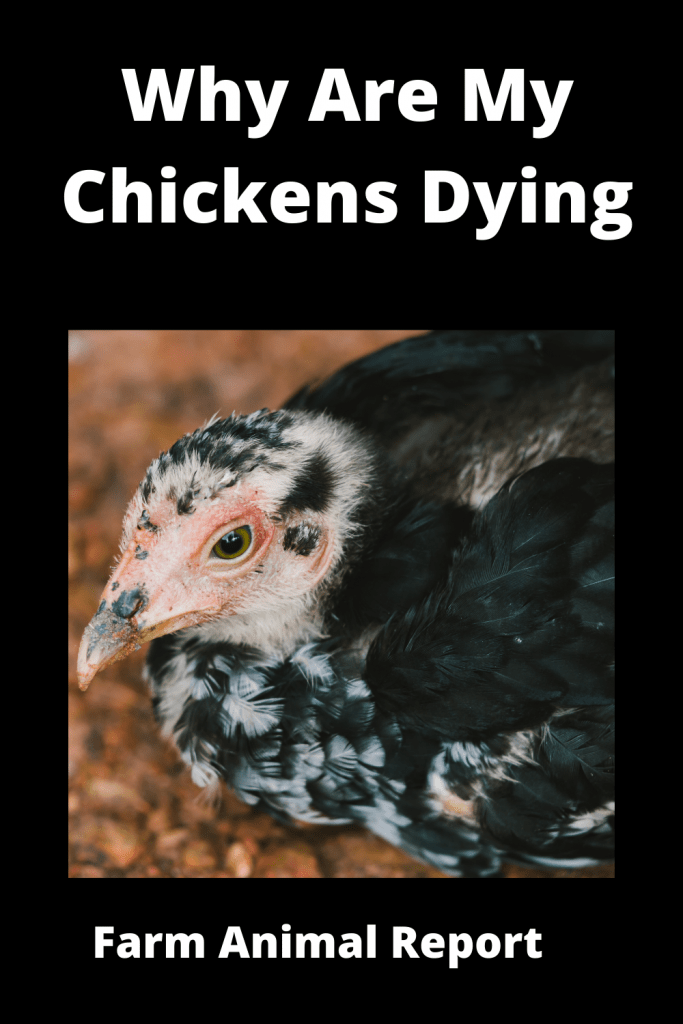
Can you save your backyard chickens, flocks, from the above diseases:
Many of the diseases mentioned cannot be treated, although antibiotics may be used in bacterial infection cases. However, these will need to be prescribed by a vet.
Isolation from other birds in a draft-free pen with access to clean water, perhaps with added vitamins suitable for birds and nutritious feed, maybe the best you can do for a sick chicken.
Prevention Tips for Chickens Dying (Death)
Multiple Chickens Died Suddenly
How can you prevent your backyard chickens from the above disease?
The key to preventing these diseases as much as possible is to follow a few simple rules:
- If you buy the chickens for your backyard, buy from a reliable person whose birds exhibit good hygiene and health practices.
- Keep age groups separated for as long as practicable, so young birds are kept away from adults while they gain some immunity.
- Do not introduce birds from a different source to your flock without spending at least two weeks in isolation first.
- Make sure feeding and drinking equipment are kept clean and free from mold and algae.
- Try not to visit everyone else’s chickens, come back to your own wearing the same footwear, and clothes-diseases spread this way easily. Commercial poultry reps will change clothes, have showers, and carry disinfectant with them to avoid contaminating clients’ birds.
- Try to keep wild birds, especially sparrows and starlings, from getting into the poultry feed. Set rat/stoat/ferret traps, and use bait stations around the boundaries of your shed or chicken run.
Heart Attack:
This is most common in fast-growing breeds like Cornish crosses. This is usually due to overstress on fragile systems and can happen if these birds grow too widely, too quickly. Certain breeds of chickens are more predisposed to heart attacks based on their bone structure and the origin of genetic, microscopic lesions in their heart muscles.
How can We Prevent our Chickens from a Heart attacks?
Heart attack can be prevented by butchering broiler birds as soon as they are large enough to do so.
Overweight birds are just as unhealthy as overweight humans and will suffer a myriad of health problems.
You should also provide your chickens with plenty of space to roam about. This will help ensure that they get enough exercise to remain healthy.
Accidental Poisoning:
Chickens can quickly become poisoned by common foods they pick up while free-ranging. From small pieces of plastic to bits of tomato plants, many materials can prove to be toxic to chickens. This toxicity comes on rapidly, and often, the chicken shows no sign of digestive upset or distress before it dies.
- Ornamental Plants – Azela’s – Foxglove – Honey Suckle –
- Common Food – Citris Foods – Avacado Seeds –
Trauma:
This cause of death doesn’t usually present without signs of injury on a chicken’s body, but it can happen if a chicken has internal damage to its organs. Chickens fight and can end up accidentally killing each other. Chickens can run into things, damaging their heads, or even fall from a deadly height. Chickens can also be trampled or squashed by larger birds if they are living in close confinement.
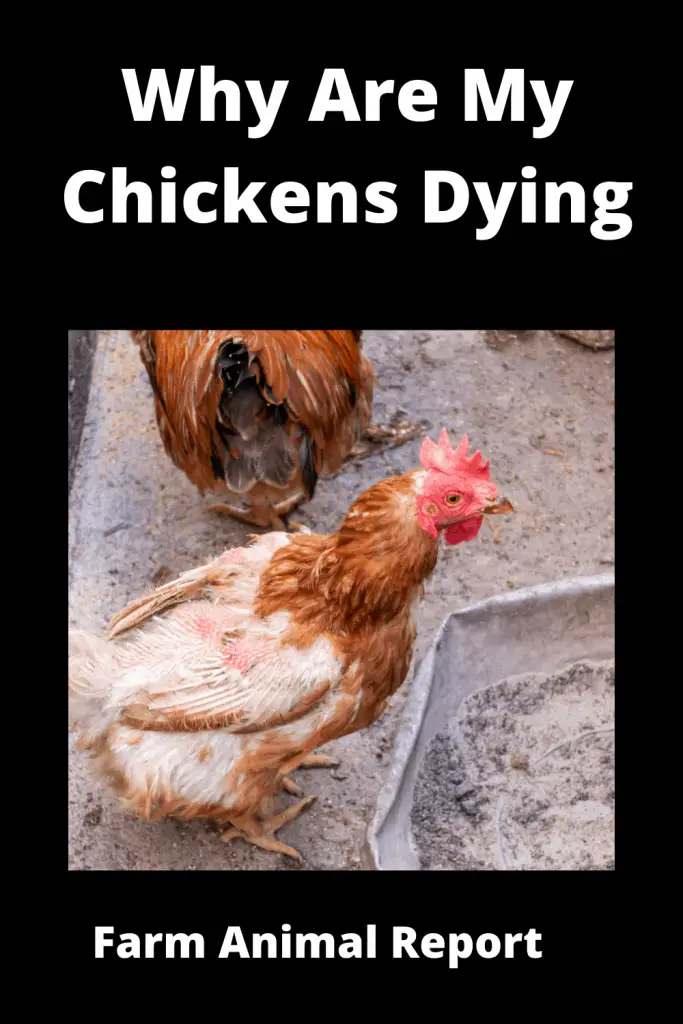
How can We Prevent our Chickens from Trauma?
There’s not much you can do to prevent this besides making sure you have enough space for your chickens to coexist in peace. If your chickens are free-ranging, four square feet per bird is enough space. However, those that are inside all the time need about 10 square feet each.
Egg bound:
Because none of our other birds become sick, we ultimately determined our chicken’s cause of death to be the impaction of an egg between her shell gland and vent. At the time, our chickens were laying massive eggs, and we believe this particular hen just so happened to be so unlucky that she could not expel the extra-large egg.
How can you Prevent your Chickens from Egg Bound?
- Preventing chickens from becoming egg bound can be delicate, but common causes include calcium deficiency and excess weight.
- Again, providing your chickens with a healthy diet, plenty of room to roam, and clean, living space help to prevent this unfortunate occurrence.
- Also, make sure you have enough nesting space for all your laying hens. If they must wait too long to lay, this can result in a stunk egg.
Impact Crop:
An impacted crop is caused by a piece of material, such as straw or dried grass, getting stuck in a tangled mess (like a hairball in cats) inside the crop.
This prevents the contents from moving to the stomach and can cause symptoms such as lethargy, refusal of food, and excessive drinking. If left untreated, it can lead to conditions such as sour crop and pendulous crop, and ultimately, death, as the chicken will not willingly eat.
Prevention of Impact Crop
This can be prevented by feeding lots of grit and providing access to free-range acreage so that they can access natural grit-like materials on their own. Pay attention to your birds for signs of fatigue and refusal to eat, and you will hopefully catch any signs of impacted crops before they become lethal.
How can you Keep Healthy your Backyard Chickens?
- Whenever working with chickens or supplies, wash your hands with soap and water before and after handling birds and eggs.
- Minimize the amount of exposure to external sources of contaminants both human and animal. This means reducing the flock’s exposure to visitors who may own poultry; if you or a visitor has been with another flock, be sure to change your clothes and shoes to prevent carry of disease.
- Avoid wildlife and domestic pets by keeping food in safe areas, such as inside the coop or runs. Reduce contact with wild birds or their droppings by placing wild bird feeders far away from the coop and by constructing a roof or cover over the run.
- When adding new birds, follow a 30-day quarantine. Keep any new birds cooped in a different building at least 12 yards away from your flock, observe them for signs of illness, and care for new birds last to help keep them from spreading.
- Remove wet or soiled bedding daily. Weekly removed and replaced all bedding. At least twice a year, perform a deep clean by removing everything from the coop and sanitizing with a 90/10 solution of water and bleach.
Major Reasons for Poultry Deaths Each Year
- Avian Influenza
- NewCastle Disease
- Fowl Cholera
- Starvation
- Predation
Diseases: Some of the most common poultry diseases include avian influenza, Newcastle disease, and fowl cholera. These can be passed from bird to bird by way of an infected water source or through contact with another animal such as a rodent that is carrying them. A virus may also infect a flock which results in death if not treated immediately.
Starvation: The winter months can be harsh for animals, including poultry flocks who may not possess the strength to survive in colder climates.
This is especially true if they are sick or injured and unable to move about freely to search for food sources that will help them maintain their weight throughout the cold seasons. If you live in an area that has heavy snowfall, you should ensure your flock is able to access food and water by creating a path outside or providing some form of shelter where they can eat without being exposed.
Predation: In the wild, predators such as foxes will hunt for poultry flocks – especially those who are young and easy targets. A poultry owner may think their flock is safe, but predators do not discriminate and will attack even if they know the chicken is protected by an electric fence.
The best way to protect your flocks from such attacks is through proper security measures that include equipment like a fox-proof coop as well as keeping them under constant supervision when they are outside of it
My Chickens are Dying One by One
Other Chicken Facts
- egg poisoning chickens
- heart attacks egg
- death impacted crop
- attacks egg binding
- internal injuries chickens
- prevent random death
- backyard chickens dying
- sudden chicken death syndrome
| Fowl Cholera Symptoms | Methods of Prevention |
|---|---|
| Abnormal Breathing | Immunizations |
| Bloody Stool | Rodent Control |
| Coughing | Removal of Dead birds |
| Abnormal Size Eggs | Contaminated Water |
| Swelling of Face / Waddles | Cleaning and Disinfecting Between Flocks |
| Yellow Discharge | Keep Coups Dry |
| Diarrhea | |
| Ruffled feathers | |
| Depression | |
| Lameness | |
| Oral Discharge | |
| Change in feeding habits |


